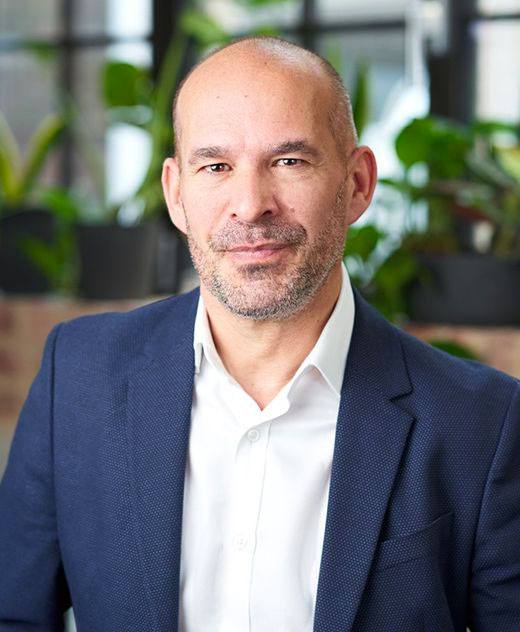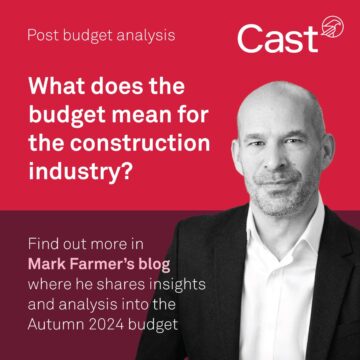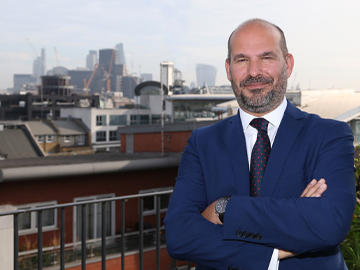External events and increasing pressure from investors and clients mean the sector’s priorities are changing. It is down to us to make sure this change is for the better, says Mark Farmer
As the new year begins, the country is still enduring a period of significant uncertainty. The spread of the Omicron variant has led to a return of some restrictions across the UK and it is not yet certain that the huge booster vaccine deployment efforts will avoid a return to a fuller lockdown, at least in England.
Although we have entered 2022 with fewer restrictions on business and free movement than was the case at the start of 2021, the threat of more economic and business disruption is still weighing heavy on the sector’s outlook for the year ahead.
Alongside the delay in moving from pandemic to endemic we have seen the first interest rate rise in three years as inflation tips over 5% for the first time in a decade, and we have a besieged prime minister adding political turmoil to the mix.
We can take confidence from the fact that construction has proved itself to be adaptive to the circumstances in which we have found ourselves over the past two years. The question now, though, is whether our industry’s decline in structural resiliency combined with growing compliance and regulatory challenges will make the future much more difficult to predict.
“There is a lingering cynicism that the sector is at risk of greenwashing itself into a false sense of security that it is ahead of the game when, in reality, it still has a mountain to climb”
Away from the pandemic, I see three issues taking centre stage in the short to medium-term outlook for the sector: decarbonisation, resource scarcity and procurement reform.
In the wake of the COP26 conference it might seem appropriate to start with the ever-growing significance of the carbon agenda in construction. Despite a 30% reduction in operational carbon recently being confirmed via changes in building regulations from June 2022, there is a lingering cynicism that the sector is at risk of greenwashing itself into a false sense of security that it is ahead of the game when, in reality, it still has a mountain to climb.
I would point to two recent instances where it is clear that we are entering a new phase in the carbon challenge. The first is the refusal of planning consent for the proposed Tulip viewing tower project in London by the government’s planning inspectorate, with its embodied carbon burden being cited as at least part of the reason for refusal. This is a potential milestone in defining the role of carbon in our planning system’s decision-making process and there is a real chance this could become a wider precedent. If it does, it will have profound implications on what we design, how we construct it and ultimately whether the end function is worth the carbon penalty.
The second example, which could have even bigger implications, is the furore which has developed over Marks & Spencer’s plans to redevelop its flagship Oxford Street store. The initial pushback was perhaps a mix of questions over architectural style and heritage concerns, but it seems the debate has swung towards the excessive embodied carbon that the redevelopment would generate, especially bearing in mind recent corporate promises by M&S regarding its journey to net zero.
It seems that a whole series of longstanding industry challenges such as optimising form and function, conservation of existing assets, reducing negative community impacts or improving industry productivity are all indeed proxies for the much more existential campaign of halting climate change.
“The spectre of reputational risk to corporate occupiers and increasingly ESG driven investors is likely to unleash a whole new pattern of investment decisions”
The industry should sit up and listen to this, as the spectre of reputational risk to corporate occupiers and increasingly ESG driven investors is likely to unleash a whole new pattern of investment decisions.
Back in the summer of 2021 in this Building column, I spoke about the concept of “peak new-build” appearing on the horizon – a world where every decision to demolish an existing asset or indeed to build a new one on a virgin site would need to be prefaced with the alternatives of do nothing or more likely re-purpose, upgrade and adapt existing assets. As this trend sweeps over large parts of both the commercial property world and parts of the public estate, the implications on design and construction will be significant, in terms of workload size and profile, skills required and risk allocation.
The second big-picture issue which I believe will continue to dominate boardroom thinking in 2022 is the impact of construction resource scarcity. Having seen this emerge as a growing threat during 2021 – and partly reflected in the latest inflation figures and ensuing interest rate rise – the interruption of material supply chains and labour supply has inevitably sparked a conflation of cause and effect explanations spanning the impact of Brexit and the pandemic.
Subject to the future course of the pandemic, material supplies could potentially normalise in 2022 and opportunistic price hikes may subside. What is much more a thorny long-term issue is the fact that the human resource base of our industry is continuing to be eroded, and recent events have only acted to accelerate what was in fact already happening due to demographics and societal change.
We cannot replenish skilled labour in the same way that manufactured materials can be re-stockpiled. Unprecedented wage inflation is starting to elevate the productivity debate across the industry and is also inextricably linked with the embodied carbon point referenced above.
Businesses are going to be increasingly challenged by their own cost base as wage inflation and sheer lack of the right skills gradually make the adoption of technology and manufacturing principles a more attractive option than the previously perceived extra cost and risk of change.
“It is almost inevitable that the pace of innovation will lag behind the labour resource squeeze we are facing and the resulting build cost inflation, and the inability to physically deliver some projects will become an invisible ceiling on industry growth”
As the Building Safety Bill continues to move through legislative process during 2022, the competency and assurance filter that our industry has managed to circumnavigate for so long will finally be overlaid across a large part of our industry. The harsh reality is that this will further reduce the available, competent workforce and will further force consideration of alternative methods of delivery as a critical means of assuring the “golden thread”.
However it is almost inevitable that the pace of innovation will lag behind the labour resource squeeze we are facing and the resulting build cost inflation, and the inability to physically deliver some projects will become an invisible ceiling on industry growth. Subdued output figures for the end of 2021 suggest this is already happening as construction hits its natural limit of achievable output based on current productivity norms.
With some clients also nervous about the wider uncertainties ahead and suffering viability issues with build cost growth, we may well see a natural equilibrium return in 2022 as a lighter workload balances finite resource availability.
The third issue is in fact linked to both of the above points. Will 2022 deliver what the industry desperately needs in terms of procurement reform?
The question is whether we will start to see changed behaviour and a rebasing of client requirements to respond to the challenges of decarbonising while also trying to improve delivery certainty against the resiliency decline and increasing regulatory burden set out above.
We need to see more responsible clienting, with advisors supporting, focused on better security of supply chain delivery and better able to demonstrate that the client has put safety and quality first as these matters become more regulated.
We could also see the influence of ESG driven investors and lenders increasingly forcing the industry to measure and then improve what it does beyond how cheap we can deliver. A real ESG drive will force consideration of total process carbon, skills and training legacies, the working and employment conditions of the workforce and wider community benefits.
The danger, however, is that, due to inevitable cost pressures, it will become a tick-box exercise as a starter before getting onto the usual main course of buying construction as cheaply as possible.
On this procurement point, It will be interesting to see how quickly Construction Playbook principles are tangibly embedded in some of the major public infrastructure programmes coming forward. We also have the government’s wider “transforming public procurement” reforms taking shape this year for enactment into law in 2023.
“We could finally be tackling a different exam question which requires a different answer, one that is not about how cheap can you price but how we all collectively create more value and assured outcomes”
The construction industry should be welcoming here the move from “most economically advantage tender’ (MEAT) to “most advantageous tender” (MAT) with the implied focus on more balanced selection criteria spanning wider criteria such as productivity, innovation, levelling up and decarbonisation.
2022 could therefore be the year in which government leadership of public procurement reform combined with growing private sector corporate and investor/lender requirements to be responsible procurers conspire to become just the cocktail that the construction industry has needed for so long. We could finally be tackling a different exam question which requires a different answer, one that is not about how cheap can you price but how we all collectively create more value and assured outcomes.
In the light of all of the above, and putting the uncertainty of the pandemic to one side, we can still be safe in the knowledge that 2022 will be a year when the construction sector will be forced by external events – and possibly also by its clients – to do things differently.
Mark Farmer, CEO Cast Consultancy, December 2021
(From Building Magazine Article – 4th January 2022)






